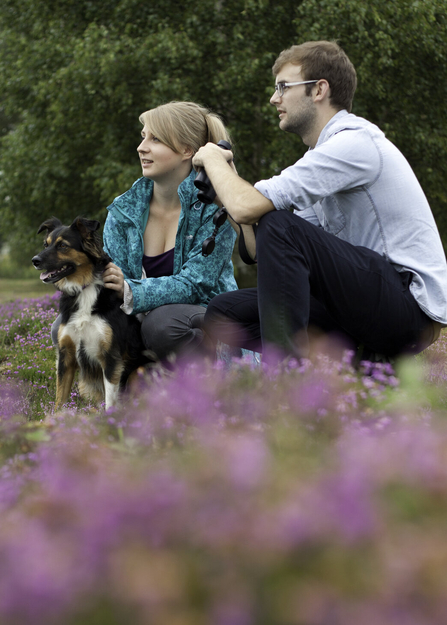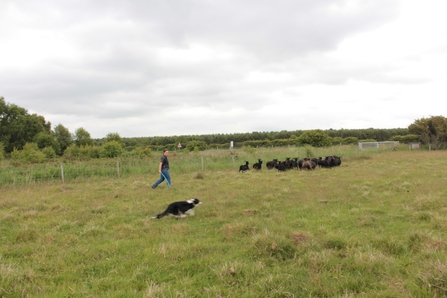Dogs were the first ever animal to be domesticated, dating back to prehistoric times. The domestication of dogs even precedes agriculture, meaning humans were using dogs before they began farming. Very little research has been completed on the earliest dogs in Europe; those found in Mesolithic (middle stone age) settlements. Our own Mesolithic site at Lunt Meadows Nature Reserve would have very likely been home to dogs and humans alike.
How did dogs become dogs?
The process of how wolves were domesticated into the dogs we see today is still a mystery. At some point about 30,000 years ago (plus or minus 10,000 years), wolves and dogs genetically diverged from one another. Dogs at this time would still have looked much like the modern wolf, but humans were quick to breed dogs for features that suited their purposes. Cultures around the world domesticated dogs for their own needs, from livestock guards to canines used for wool.
Dogs, before they became dogs, would have originally been attracted to the discarded food of humans. Over time, humans from whom the dogs were scavenging realised they could be useful, and so the bond between human and dog began to form. After a certain point, dogs would follow humans wherever they went, undergoing a change in behaviour that would ultimately lead to domestication.
Dogs in the modern day are considered 'man’s best friend'; loyal companions and lifelong pets for many people across the world. However, working canines also hold an important place in modern society. Dogs today can be trained to assist those in need, herd livestock, sniff out dangerous substances, and even assist in conservation efforts. Humans today have a very close and expansive relationship with dogs, but how has this changed over the last 10,000 years?



